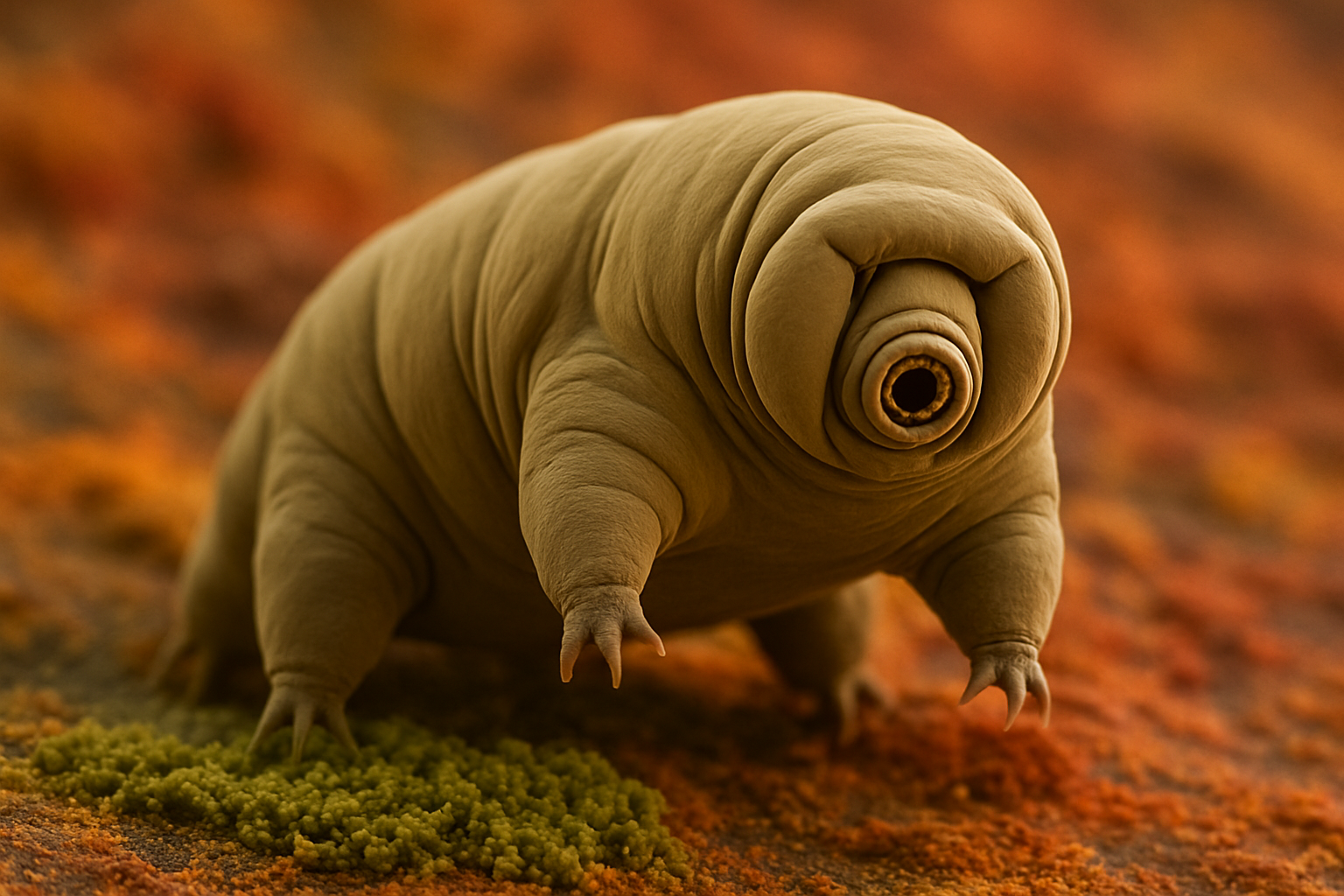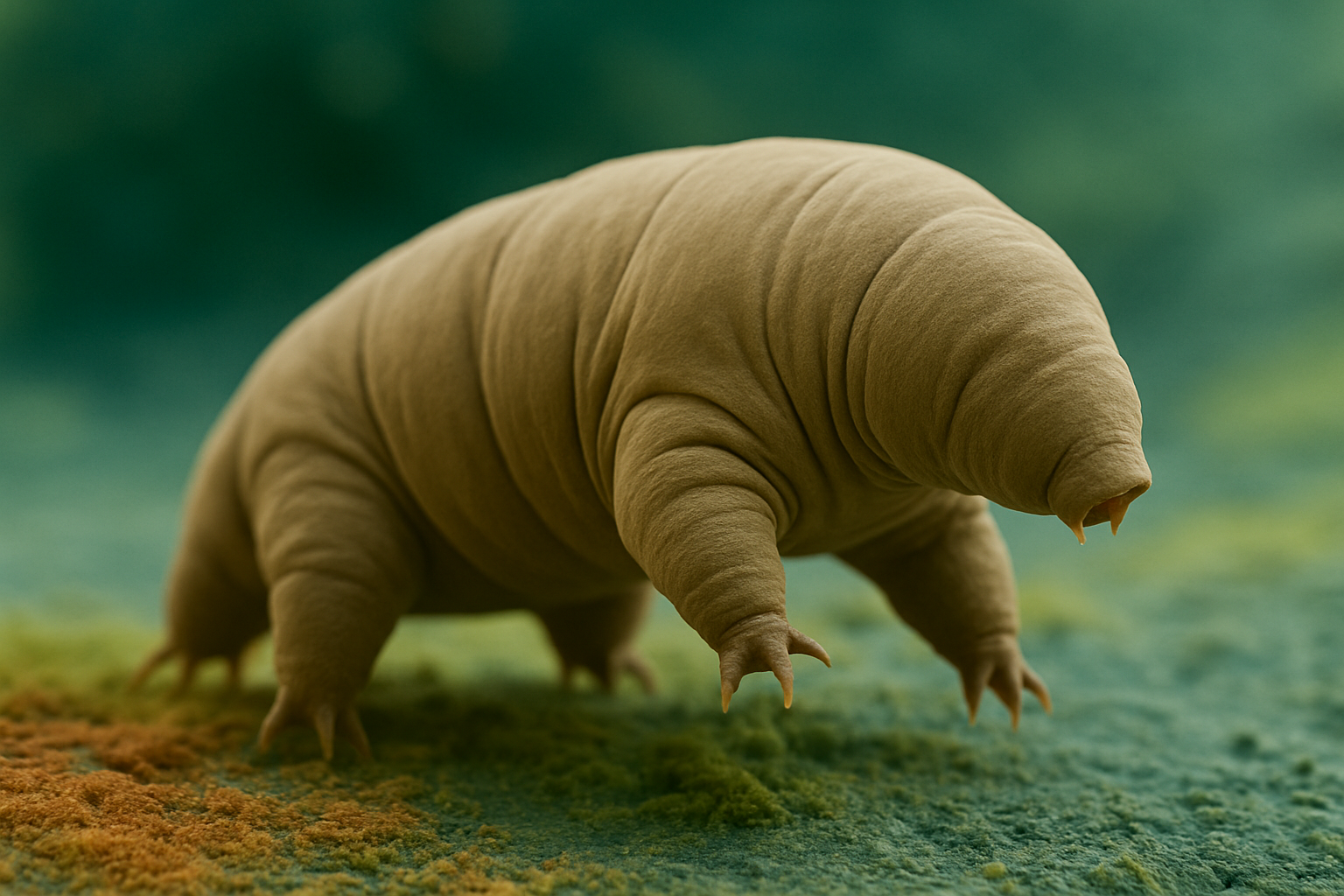When we think of prehistoric animals, beasts like Dinosaurs, Wooly Mammoths, and Sabre Tooth Tigers are usually the first to come to mind. Shockingly enough, there are organisms that roamed the Earth 600 million years ago that live among us to this very day. Tardigrades are microscopic organisms that have existed on this planet for longer than we can fathom. Up close, they look like the Michelin Man wearing a ghost buster’s suit. Like most great things in life, they come with a variety of nicknames. In the case of the Tardigrade, they’re commonly known as water bears and moss piglets. Here’s some more info about one of the most unique organisms Earth has ever mustered up.
History
Tardigrades have existed on Earth for about 600 million years. To put that in perspective, the Dinosaurs were around roughly 250 million years ago. Despite basically being grandfathered into planet Earth’s ecosystem, they weren’t actually discovered until 1773 by German Pastor, Johann August Ephraim Goeze. This is because they range between 50microns to 120microns, so they’re invisible without a microscope. The name Tardigrade directly translates to, “slow-moving”.
So, what are they exactly?
There aren’t any other organisms on the planet quite like Tardigrades. Technically, they belong to the Tactopoda section, but they have no direct relation to any other organism on Earth. Water bears have up to 1,300 species amongst themselves.
Tardigrades are found in areas with aquatic moss. To stay hydrated, they require a thin layer of water around themselves at all times. Their ideal habitats include lichens and freshwater moss (this is how they got the title of moss piglets). But rest assured, they’re far from limited. Water bears can exist in any environment, from sand tunes in the desert to the Antarctic tundra. They can survive in temperatures ranging from -272 Celsius, -458 Fahrenheit, to 150 Celsius, 302 Fahrenheit. Their life spans range from 2 weeks-100 years, so they make the most out of whatever habitat they end up in.
Plant cells are their food of choice, but they’ve also been known to eat other micro-organisms and even fellow tardigrades. What’s fascinating and frightening at the same time is that these organisms actually use teeth to grab onto their food and suck the juices out of the algae.
Some species of tardigrades reproduce sexually while others reproduce asexually. The mating process takes up to an hour and the eggs typically hatch after 90 days.
Survival Skills
In true warrior spirit, Tardigrades are the only organism to survive all 5 of Earth’s mass extinction periods (6 if you count 2020). Part of their survival skills includes radiation tolerance. Water bears are able to withstand 5000 grays of radiation. By comparison, it would only take 10 grays of radiation to wipe out humans. Some parts of Chernobyl were exposed to 50 grays of radiation and haven’t fully recovered to this day.
You don’t last 600 million years without a survival tactic or two. Moss piglets have a process known as anhydrobiosis. This happens when water bears become dehydrated and roll up into a ball. From there, a sugar called Trehalose replaces the water in the cells and keeps the tardigrade alive. Another survival tactic is cryptobiosis, where the animal slows down its metabolic rate to a virtually undetectable level.
It’s easy to forget about organisms that aren’t visible with the naked eye. But it’s mind-boggling to comprehend that creatures inhabit this world that were around 600 million years ago.












